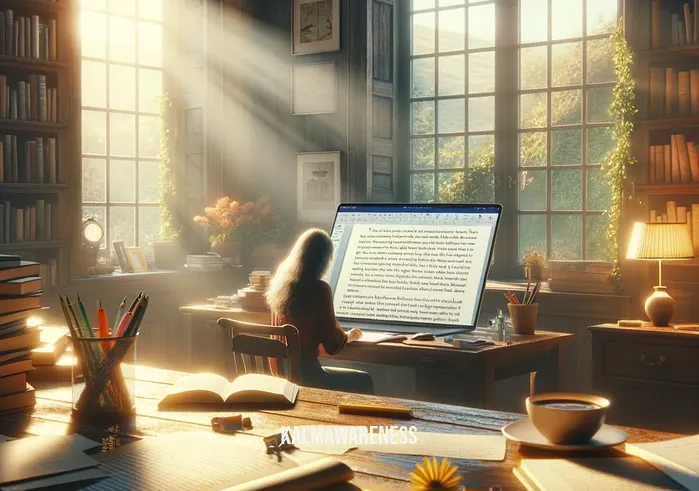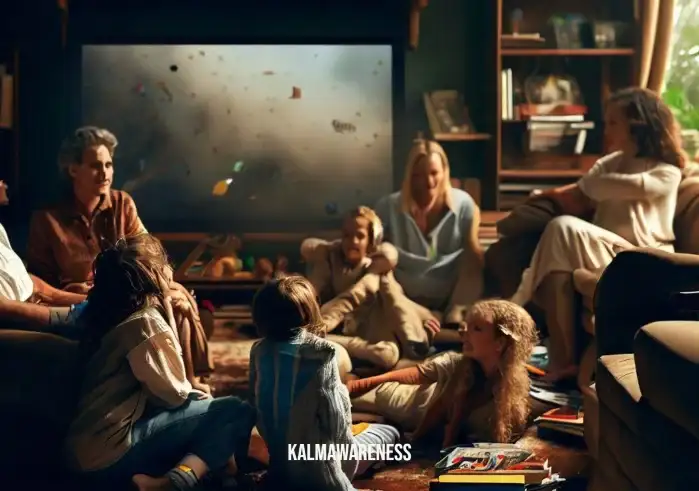Tell It Slant Writing and Shaping Creative Nonfiction: An Introduction
In today’s digital age, where readers are flooded with a sea of content, capturing attention requires a unique approach. One such approach is the art of “tell it slant writing and shaping creative nonfiction.” Rooted in the time-tested tradition of creative storytelling, this technique provides a fresh lens to view personal narratives and lends an authentic voice to the writer.
What is “Tell It Slant” Writing?
Drawing inspiration from Emily Dickinson’s famous line, “Tell all the truth but tell it slant,” this writing method emphasizes the art of sharing truths through a slanted, indirect manner. Instead of a straightforward recounting of events, it nudges the writer to present the story through a distinct perspective, offering readers a rich tapestry of emotions, nuances, and underlying themes. By doing so, it marries the factual rigor of nonfiction with the imaginative prowess of fiction. More about this can be explored here.
The Power of Creative Expression
Telling a story slant is not merely about altering the angle of narration; it’s an exercise in creative expression. This art form allows writers to channel their personal experiences, feelings, and insights, creating a bond with the reader that is intimate and genuine. For instance, while a straightforward account might mention a character’s reaction, a slanted narrative dives deeper. It paints a vivid picture, perhaps likening the reaction to the vibrations felt in the chakra garganta—the throat chakra—hinting at suppressed emotions yearning for release.
The Role of Narrative Structure
In the realm of “tell it slant writing and shaping creative nonfiction,” narrative structure plays a pivotal role. It’s akin to the skeleton of a story, determining its pace, flow, and progression. A well-crafted structure ensures that the story unfolds seamlessly, guiding readers through various stages of the narrative. Consider, for instance, the captivating pull of a well-delivered notebook monologue. Its charm lies not just in the content but in the strategic delivery, the pacing, and the calculated pauses.
Literary Craft Meets Personal Storytelling
One of the profound beauties of this writing technique is how it melds literary craft with personal storytelling. Writers are not merely narrators; they become artists, using tools like metaphor, allegory, and imagery. They weave their tales much like the intricate patterns found in mindful knits, each thread symbolizing a thought, an emotion, or a memory.
Incorporating elements from mindful painting activities and mindful art activities, authors can craft pieces that are not just read, but felt. They transport readers into their world, making them laugh, cry, or introspect, fostering a deep connection. Through their words, authors also shine a light on critical issues, like the importance of exploring mental health through art, underscoring the therapeutic potential of creativity.
“To write is to reveal oneself. To write slant is to reveal with a touch of mystery, drawing readers into a shared journey of discovery.”
Setting the Stage
As we embark on this exploration of “tell it slant writing and shaping creative nonfiction,” it’s essential to remember that every writer has a unique voice. This technique isn’t about conforming but about harnessing one’s distinct style and channeling it through a new lens. In the chapters to come, we’ll delve deeper into the intricacies of this art, discussing techniques, examples, and the profound impact it can have on both the writer and the reader.
For those eager to grasp the nuances, intricacies, and transformative potential of this literary form, continue reading. The journey, filled with revelations and epiphanies, awaits in the next segment.

Unraveling the Layers of Tell It Slant Writing in Creative Nonfiction
The world of tell it slant writing is akin to an intricate tapestry, woven with threads of truth, yet tinted with creative hues. As we venture deeper, this chapter delves into the specific nuances of this technique, illustrating how it invigorates the narrative in creative nonfiction.
A Fusion of Fact and Fiction
The essence of creative nonfiction is to present factual information, seasoned with literary devices typical of fictional works. By adding imaginative elements, writers can narrate real-life incidents with a flair that captivates the reader. This approach aligns seamlessly with tell it slant writing, where the art of nuanced storytelling takes precedence.
Components of Slanted Storytelling
To effectively integrate tell it slant techniques into nonfiction, it’s essential to understand its core components:
Emotional Depth: Dive deeper than surface-level emotions. Create layers by juxtaposing joy with melancholy or hope with despair. Through this, readers can empathize with the narrative, akin to experiencing the therapeutic embrace of mindful knits.
Perspective: Every story can be seen from multiple angles. The key is to choose a perspective that offers a fresh, unexpected viewpoint, much like observing an artwork during mindful art activities.
Imagery and Symbolism: Paint pictures with words, crafting scenes so vivid that readers can immerse themselves fully, similar to the immersion one feels in mindful painting activities.
Strategic Omission: Just as important as what is said is what remains unsaid. Allow readers to fill in the gaps, enabling them to be active participants in the storytelling journey.
Underlying Themes: Weave in themes subtly, making readers ponder, introspect, and derive meanings on their own.
Comparative Insights: A Tabular Overview
To provide a clearer picture of how tell it slant writing stands apart, let’s compare it with other narrative techniques in creative nonfiction.
| Technique | Primary Focus | Emotional Engagement | Reader’s Role |
|---|---|---|---|
| Tell It Slant | Nuanced storytelling | High | Active participant, decoding underlying messages |
| Straightforward Narrative | Direct recounting of events | Moderate | Passive consumer of the story |
| Anecdotal Approach | Short personal stories | Variable | Engaged but within confined story arcs |
| Reflective Narration | Personal insights and reflections | High | Active introspector, relating to author’s experiences |
| Reportage | Fact-based, journalistic style | Low | Purely informational consumption |
While all these techniques have their place and purpose, tell it slant writing offers a unique blend of engagement and introspection, allowing readers to embark on a journey of discovery.
The Transformative Impact
Tell it slant writing, when wielded adeptly, has the power to transform mundane facts into riveting tales. By shaping creative nonfiction with this method, writers gift readers a mirror that reflects not just the external world, but the myriad emotions and thoughts that churn within.
For instance, a straightforward account of a person dealing with mental health challenges can be moving. But narrate it slant, and it becomes a poignant tale where every therapy session is likened to the colors splashed during mindful exploring of mental health through art. The journey of healing becomes an artwork, where every brushstroke, every hue, represents a step towards wellbeing.
Venturing Ahead
As we continue to unravel the world of tell it slant writing in creative nonfiction, there’s still much more to explore. The upcoming segment promises a deeper dive into techniques, case studies, and the transformative power of this literary craft. So, if you’re keen on mastering this art or simply wish to appreciate its beauty, continue reading. A trove of insights awaits in the next chapter.

Igniting the Muse: The Inspirational Essence of Tell It Slant Writing
Crafting tales rooted in truth but woven with creativity requires a unique spark – an inspiration. Tell it slant writing in creative nonfiction thrives on drawing from life’s vast reservoir of emotions, experiences, and lessons. In this chapter, we’ll explore the wellsprings of inspiration that fuel this literary technique and hear from voices that have eloquently captured its essence.
The Heartbeat of Hope in Slanted Tales
Hope serves as the pulsating core of many slant-written narratives. When one’s reality is rife with challenges, framing it with a slant not only offers a unique perspective but also infuses it with optimism. A clear example of this can be seen in monologues that unveil the depths of human emotions. Taking a leaf from the notebook monologue, writers often unveil raw, unfiltered emotions, subtly weaving hope through the narrative’s fabric.
Voices of Resonance: Quotes that Illuminate
Tell it slant writing, with its focus on unearthing deeper truths and presenting them with a creative twist, has inspired many. Here are some quotes that echo its essence:
- “Facts can be transformed into art when bathed in the light of perspective.” — Anonymous
- “In every truth, there’s a story waiting to be spun; it’s the slant that determines its hue.” — Lila Greene
- “To narrate life slant is to embrace the myriad shades between black and white.” — Morgan Hale
- “Reality, when seen through the lens of creativity, unfurls its layers, revealing tales untold.” — Nathan Fields
- “Stories, like life, aren’t just about the events, but the spaces between them; it’s the slant that fills those spaces.” — Sofia Turner
Real-life Inspirations: Cases that Stirred Souls
Maya’s Memoir: Maya, a cancer survivor, penned her journey not as a somber chronicle of pain and suffering but as a tale interwoven with hope and resilience. Using the tell it slant technique, she juxtaposed her medical treatments with chakra garganta healing sessions. The result? A memoir that not only detailed her physical battle with cancer but also her spiritual and emotional growth.
Lucas’ Travelogue: Venturing through war-torn regions, Lucas could have easily written a dark, disturbing account of human suffering. Instead, he employed the slant technique, highlighting pockets of hope, resilience, and human connection amidst adversity. His travelogue became a testament to the human spirit’s indomitable nature.
Elena’s Essays: A teacher in an inner-city school, Elena’s daily encounters ranged from heartwarming to heartbreaking. Instead of a straightforward account of her teaching life, she adopted a slanted narrative. Each essay became a mosaic, with shards of reality pieced together with creative insights, showcasing education’s transformative power.
The Everlasting Quest for Inspiration
The world around us is brimming with tales, both whispered by the winds and roared by the raging storms. For those seeking to craft narratives using tell it slant writing, the key lies in tuning into these stories, filtering them through one’s unique lens, and painting them on the canvas of creative nonfiction.
So, where does one go from here? Having delved into the core of inspiration for slanted storytelling, the next chapter beckons with the promise of practical techniques and tools. If you’re keen on honing your craft or simply wish to understand the nuts and bolts of this art form, continue reading. The journey into the world of tell it slant writing and shaping creative nonfiction is far from over.
@
The Art of Slant: Unraveling the Techniques of Creative Nonfiction
One of the most beautiful aspects of literature lies in its ability to present facts with a flourish, to narrate the known through an unknown path. Tell it slant writing and shaping creative nonfiction is an exemplary method of doing just that. Let’s dissect this artistic approach to storytelling, laying bare its layers for a clearer understanding.
The Genesis: Why “Tell It Slant”?
Historical Prelude: The term “tell it slant” finds its origin in a poem by Emily Dickinson, emphasizing the idea of narrating truth obliquely. It captures the ethos of revealing facts with a fresh narrative twist.
Modern-Day Relevance: In a world overloaded with straightforward information, slanted narratives offer readers a refreshing perspective, enriching their reading experience.
The Balance: Telling it slant bridges the gap between raw facts and human emotions, ensuring neither overshadows the other.
Key Elements of Telling It Slant in Creative Nonfiction
Narrative Voice: This refers to the perspective from which a story is told. In slanted narratives, this voice often oscillates between the objective and the subjective, offering readers a dual lens.
Structural Creativity: While facts remain consistent, the structure in which they’re presented can vary, often following non-linear, fragmented, or thematically clustered formats.
Imagery and Metaphor: These are the tools that add a fictional flavor to nonfictional tales, making them more evocative and relatable.
Emotional Resonance: By tilting the narrative, writers can connect more deeply with readers, evoking emotions that a straightforward account might miss.
Advantages of Adopting the Slant Approach
- Engagement: With its blend of facts and creative narrative structures, it keeps the readers hooked.
- Flexibility: Offers writers the liberty to play with narrative structures, voice, and pacing.
- Depth: Provides a multi-dimensional view of events, allowing readers to see beyond the obvious.
- Emotional Connectivity: By presenting facts with a human touch, it establishes a stronger emotional bond with the audience.
- Unique Perspective: Even when multiple writers narrate the same fact, the slant ensures each account is distinct.
Applications in Today’s World
Personal Essays: Individuals can share their life experiences, adding layers of introspection and creativity.
Travelogues: As seen in Lucas’ tales from previous chapters, slanted writing can shed new light on places and cultures.
Mental Health Narratives: Approaching sensitive topics like mental health using techniques like mindful exploring can make them more approachable and relatable.
Instructional Content: Even how-to guides can benefit from a slanted approach, making them more engaging. Imagine a knitting guide intertwined with personal anecdotes, somewhat reminiscent of mindful knits.
Artistic Reviews: Critiques of mindful painting activities or other art forms can be enriched with personal insights, moving beyond mere objective analysis.
Peeling back the layers of ‘tell it slant’ writing reveals an intricate dance of truth and creativity. As we’ve traversed its landscape, one might wonder how to practically apply these insights and bring them to life. In the concluding chapter, we’ll delve into this, offering you tangible tools and techniques to weave your own slanted narratives. If you’re ready to embark on this creative journey, continue reading. The culmination awaits!
@
Slanting Toward the Horizon: Reflecting on the World of Creative Nonfiction
As we stand at the confluence of raw facts and imaginative expression, it’s remarkable to realize how tell it slant writing and shaping creative nonfiction has sculpted the literary landscape. This intricate blend of truth and narrative artistry not only enriches our reading experience but also reshapes our understanding of the world around us. Let’s take a moment to reflect on our enlightening journey.
The Mosaic of Slanted Narratives
The Depth of Slant: One of the profound revelations from our exploration is recognizing the layers in slanted narratives. It’s not just about wrapping truth in fiction, but adding depth, resonance, and emotional connectivity.
Beyond Words: While the core of our exploration revolved around words and narratives, we’ve seen the impacts of slant storytelling extend to artistic expressions, personal tales, and even therapeutic explorations.
Personal and Universal: The beauty of slant writing is its universality. From an individual’s personal essay to an elaborate piece in a magazine, the slant adds a unique fingerprint, making every narrative distinct yet relatable.
Revelations and Renewals
Rediscovering Familiar Grounds: Our exploration reaffirmed the idea that even familiar tales can be presented with a fresh twist, akin to seeing a well-known painting in a new light through mindful painting activities.
Narrative Healing: For many, slanted nonfiction isn’t just a form of expression, but a therapeutic tool. Narrating personal experiences, especially through avenues like mindful exploration of mental health, can be cathartic and healing.
A Dynamic Landscape: The world of slant writing and creative nonfiction is constantly evolving. New voices, techniques, and narrative structures emerge, ensuring this realm remains evergreen and vibrant.
With a heart full of gratitude, we want to thank each of you for journeying with us through this literary landscape. Your curiosity and enthusiasm have been the wind beneath our wings. As we close this chapter, let’s remember that every ending is a new beginning. Our exploration of slant narratives may have concluded, but the world of storytelling is vast and ever-evolving.
If you found this journey as enlightening as we did, we invite you to delve deeper into our magazine. Whether you wish to revisit sections for clarity or explore new horizons, we promise a treasure trove of insights. And if the muse strikes, why not try crafting your own slanted narrative?
Here’s to countless more tales, myriad perspectives, and the endless magic of words. Stay curious, stay inspired, and until next time, happy reading!




